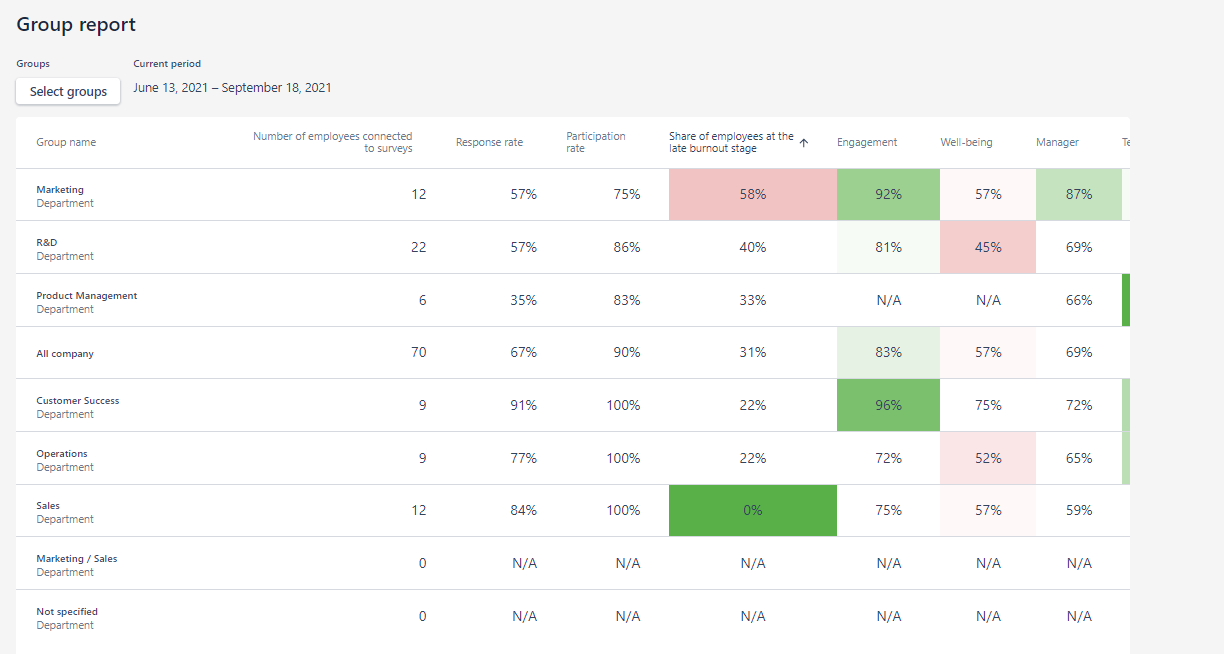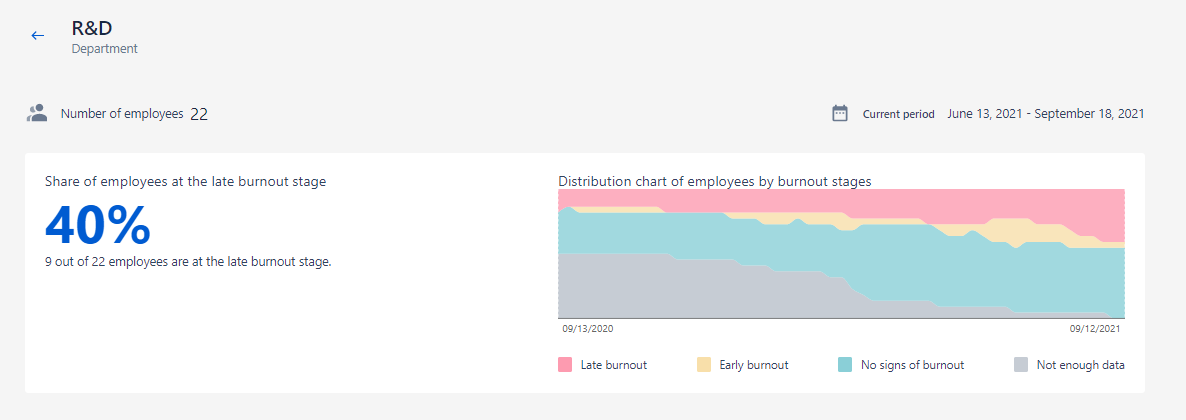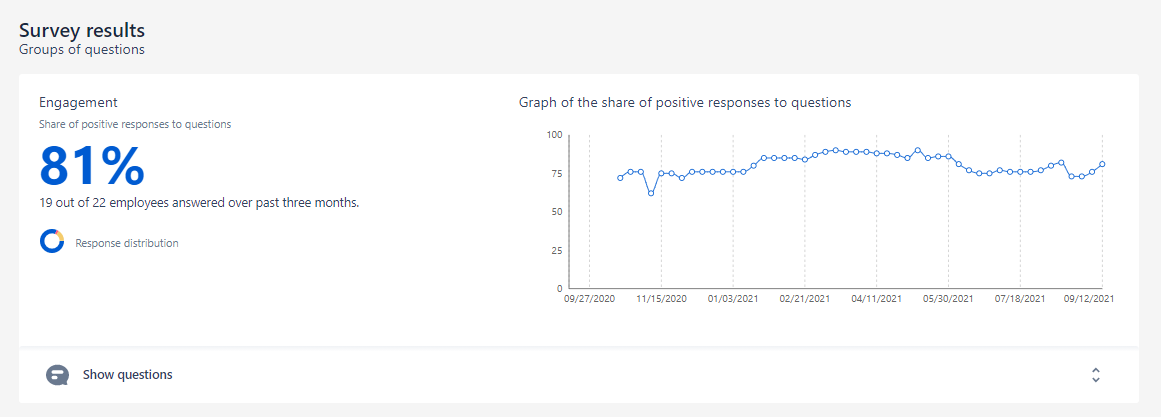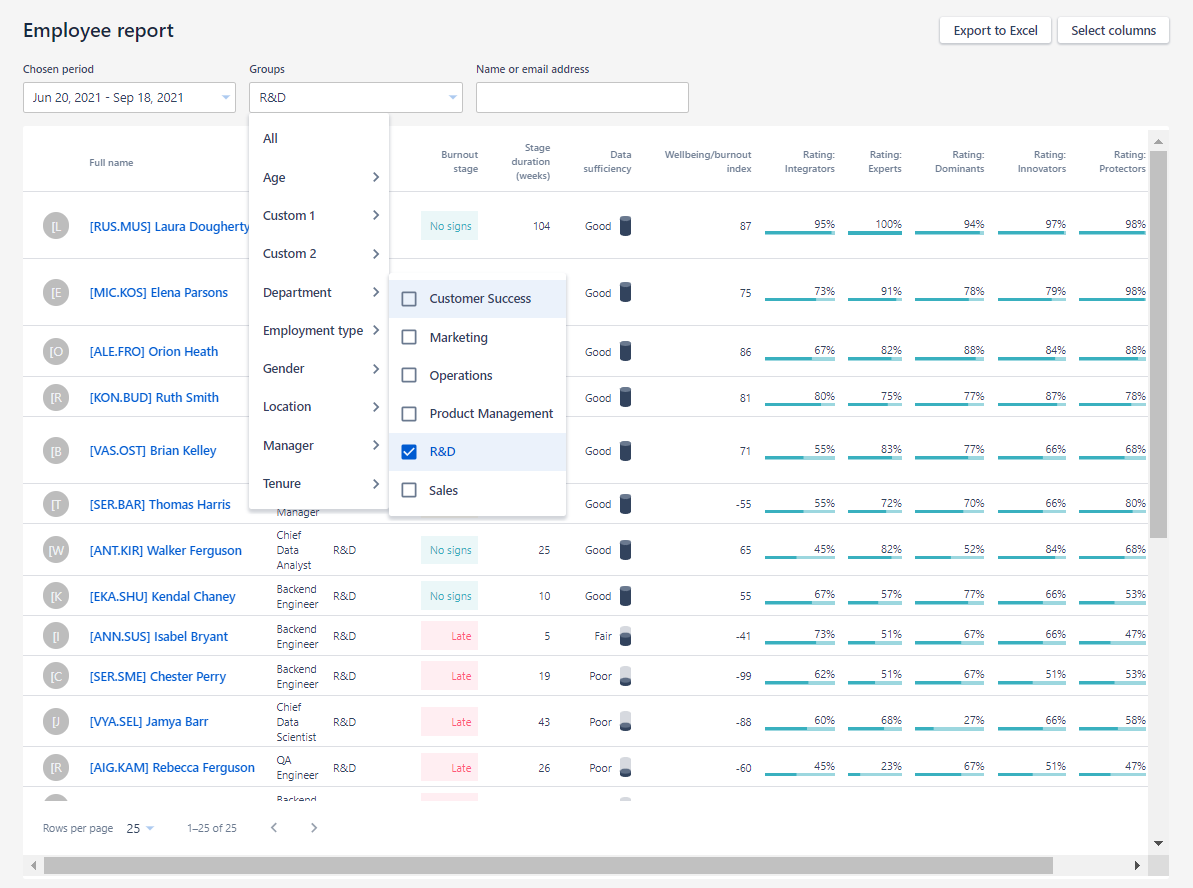Employee wellbeing. Work at the group level
It is general practice to begin dealing with burnout with the group which has the highest share of employees with burnout signs. Find such a group using "Group report" screen: sort the groups by the share of employees with late burnout signs in descending order.

If you are focused on a particular group, then look at the share of employees with late burnout signs in the selected group. Is it above the average for the company? If it exceeds or equals the average for the company, then you should continue your study. If it is below the average for the company, but still high (over 30%), you should continue the study too.
To understand why the share of employees with burnout is high, follow these 5 steps.
Analyze wellbeing dynamics of the group
To do this, click on the selected group in the "Group report".

How has the number of employees in the "Red zone" changed since the previous period? Analyze the period during which the share of employees with burnout in the group began to grow significantly.
Have there been during this period significant changes in the company that could affect the mood of the employees of the group? For example, structure of the company, functions of the group or it manager could change. Talk about the situation with the employees of the group: it can help you understand the causes.
Compare the burnout dynamics of this group with the dynamics of the company as a whole. If they are similar, perhaps you should look for the causes of burnout not in this group of employees, but throughout the company.
Analyze the number of responses of employees to surveys
If you can't find obvious causes of the burnout, look at the data in the table. What percentage of employees answered the basic questions? If other departments have significantly higher response rate than your selected group, this could mean that those employees are ignoring the surveys.

You should talk to one of the members of this group at an informal meeting and try to find out the causes. Perhaps employees do not trust the platform or do not understand its helpfulness. Furthermore, try to clarify during the meeting what are they concerned about at the moment. Most likely, the employees will share with you things that they could not report on the platform.
Analyze results of the surveys
Look at the engagement level of the group and satisfaction with each driver. What drivers are the employees satisfied with? What drivers are evaluated by the employees mostly in a negative way? Delve deeper into the group's responses to each problematic driver. Take note of the topics that provoke the greatest concern among the employees.
If the group is too large, try to divide it into smaller groups. For example, if you are analyzing a big department, look separately on answers of the employees with different employment length within the company, or distribute the employees into different age subgroups. Do you see any similarities or differences? Try to divide the group according to different criteria, and most likely you will find interesting patterns.
Such an analysis will give you an overall perspective of the problems which the group is currently facing. In order to further elaborate on the problems of the group, you should talk to the employees of this group. Ask them what they are satisfied with, what they are unsatisfied with, what difficulties they see. During the conversation, ask questions on topics that you noted when analyzing results of the survey. You will most likely be able to identify the fundamental causes of burnout in this group.
Analyze the mood of informal group leaders
If the results of the survey seem positive, you should focuse on the employees of the group. Which of these employees are informal leaders? Analyze burnout profile of such employees. Perhaps one of them is in the "red zone" and can transmit negative vibes to colleagues, thus influencing the overall burnout level of the group.

You should make out the causes of burnout of such an employee, help him cope with them and return to a resourceful state. These employees can help you change the situation in the group for the better.
Develop an action plan
Your actions will depend on conclusions that you draw when analyzing the causes of burnout in the group. When planning specific steps, try to figure out which of the causes identified by you have the greatest impact on the employee burnout. Make a list, select the most important causes and start correcting the situation in relation to them.